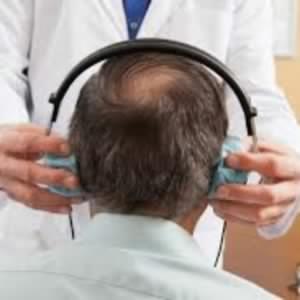Determining Recordability and Work Relatedness

A STS (standard threshold shift) tells us that an employee’s hearing has worsened compared to baseline test results, but does not tell us why it has worsened. Since OSHA considers most STS’s to be work-related unless determined otherwise by an appropriate professional, you may simply record all the STS’s on the OSHA 300 Log.
DID YOU KNOW, however, that you can have an audiologist or a physician make a determination regarding the work-relatedness of your STS’s?
You may, of course, utilize the services of local audiologists or physicians, but an excellent first choice would be the audiologist or Physician who provides professional oversight of your hearing conservation program and audiometric testing.
OSHA considers most STS’s to be work-related unless determined otherwise by an appropriate professional.
The determination process is straightforward. You will most likely be asked to submit a questionnaire indicating the employee’s 8-hour TWA (time-weighted average) noise exposure and the NRR (noise reduction rating) of his or her hearing protection. Earplug or earmuff NRR’s are determined by the manufacturer and can be found on the product packaging material. Time weighted average noise exposure is best measured by personal dosimetry, although a sound level meter can be used. If the employee works an extended shift, it will be important to provide values normalized to an 8-hour shift as OSHA requires that this information be furnished to the audiogram reviewer. You will also be asked to provide information about non-work noise exposure and any health conditions that may possibly be affecting hearing.
The reviewing professional will check to see if the hearing protection worn by the employee is adequate for the reported noise exposure. The employee’s audiometric history will also be examined in conjunction with information you have provided in the questionnaire to include medical history that may affect or cause a shift along with potential outside activities such as chainsaw use, target shooting and other activities that may have an affect on a shift and determining if it is work-related.
Certain audiometric configurations may suggest conductive hearing loss and, especially in combination with information suggesting a current cold sinus condition or a history of outer or middle ear problem, may be determined “not work-related.” Most cases, however, are not so straightforward. More often, it is the additional information provided in the questionnaire regarding health conditions or non-work noise exposure that is critical. Make sure you are provided the questionnaire and if not contact me directly for information in this regard as this is an important factor with any Potential STS that may occur during testing.
Many audiometric configurations will show high frequency hearing losses, which suggest the sensorineural losses caused by both noise and aging. Of help in distinguishing these two common causes of sensorineural loss is the employee’s pure tone threshold at 8000 Hz. OSHA does not require testing at this frequency, but it is strongly recommended that you include it in your testing program. While both noise and age result in high frequency hearing losses, the pure tone configurations typically differ in that noise induced hearing loss will often show an improvement at 8000 Hz while age-related hearing loss will not.
If the pure tone configuration suggests noise-induced hearing loss, is that loss due to workplace noise or recreational noise, a medical condition, medications, or a combination of both? What about power tools or firearm use? What about family history of hearing loss? Is there a history of diabetes? High blood pressure, medications. Without additional information, the reviewer may be unable to make a determination as to whether or not the STS is work-related.
Remember that OSHA considers most STS’s to be work-related, However, OSHA does give you the option, however, of having an audiologist or a physician review each of your STS’s for work-relatedness. Make sure your company is providing a WORK-RELATEDNESS DETERMINATION QUESTIONNAIRE
This questionnaire must be completed if a retest of an annual hearing test reveals a CONFIRMED OSHA STS. While such review does not guarantee that a given STS will be determined “not work-related,” it will almost certainly reduce the overall number of cases you need to record on the OSHA 300 Log.
Questions, call us today at KSA Hearing Conservation.
Michael Tigges DC, CME, COHC
Mobile: 615-406-0497 or email at [email protected]
KSA HEARING CONSERVATION LLC
Same Day Dot Physicals Drug & Alcohol Testing
Nationally Registered Certified Medical Examiner
Director Scheduler
- [email protected]
- Phone
- 615) 426-9556
- Fax
- 615-230-8211
- Address
- 529 Hartsville Pike
- Gallatin, TN 37066

